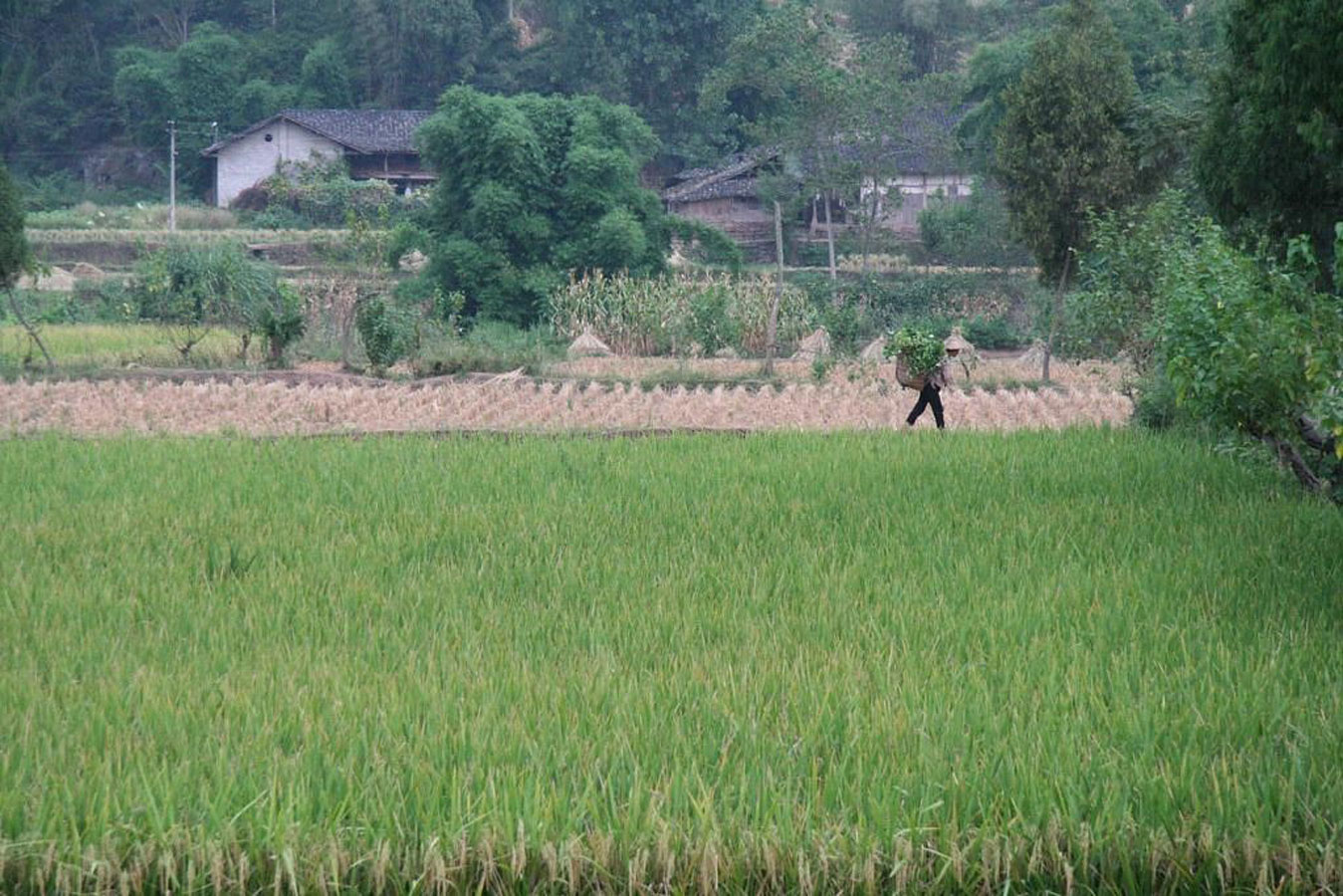Try Googling “rice and crawfish” and the first results you’ll get will likely be dozens of recipes for seafood jambalaya. Dig deeper, however, and you’ll unearth information on how farmers are profiting by marrying rice farming and crawfish cultivation together in the same fields.
Many farmers in Louisiana appear to have mastered the art of growing rice and crawfish together. Long-time rice farmers who earlier diversified into integrated crawfish aquaculture have both raised the profitability of their operations and cushioned themselves from the occasional wild swings in rice market prices. Now, a new study out of China demonstrates how smallholder rice farmers throughout Asia could benefit greatly from making the same move into integrated rice-crawfish farming. It’s a fairly simple idea and the sort of innovation that can substantially boost incomes and protect vulnerable smallholders from volatile agricultural markets. But there’s a big catch: some experts fear that a large-scale shift in this direction could end up worsening regional food security if it’s not undertaken carefully.
Not just for jambalaya
How does one raise crawfish and rice together in the same fields? In the case of the Louisiana rice farmers, they flood their rice paddies, plant their crops, and then wait patiently until rice sprouting from the inundated paddies is just tall enough to provide a little shade for the water, to help slow evaporation. This is the type of habitat the critters need; the crawfish are then introduced and left to multiply and grow. As they develop, the animals deposit their wastes, helping fertilize the soil for the next rice planting season. In turn, the rice plants provide a nice shelter and artificial wetland breeding habitat for the crawfish. Some Louisiana producers practice a rotational system, planting rice in one season, then raising crawfish in fallow fields the next.
“New cropping systems such as ratoon rice and rice-crawfish appeared and expanded steadily.”
In past years, this simple innovation has helped Louisiana’s rice farmers endure steep commodity price cuts: when rice prices collapsed, they could hold their own by selling one of the southern United States’ most popular foods. More recently, the benefit has worked in the opposite direction: the COVID-19 pandemic recently forced restaurants to close their doors, keeping diners out of their favorite Cajun eateries. This cratered demand for crawfish, but stronger rice prices helped to keep farmers above water through the pandemic-driven economic turmoil.
The view from Asia
New evidence from China shows how the spread of rice-crawfish combined farming is helping farmers earn strong returns there, as well. On the face of it, it seems like there’s nothing stopping smallholder rice farmers throughout Southeast Asia from emulating the Chinese rice farmers’ success, especially as protein demand rises in a region that is seeing rapid economic growth and a rising population.
In a new study just released in the Journal of Integrative Agriculture, a team of agricultural scientists reports on a collaboration to analyze yields and incomes at rice farms throughout Hubei Province. They set out to make side-by-side comparisons of three common Hubei rice cultivation methods practiced in dozens of rural counties: double rice, or planting and raising two crops per season in the same rice paddies; ratoon rice, a technique that lets farmers plant only once but harvest twice per season; and combined rice-crawfish production of the sort practiced in Louisiana. For decades, double rice cultivation dominated the Hubei’s rice farming sector, but ratoon rice and rice-crawfish growing have both been gaining in popularity in recent years, especially the latter. The investigators said they wanted to better understand why, and what the effects of this transition might be. “In the past decades, paddy cropping systems had changed dramatically in the Yangtze River Basin in central China,” lead author Zhou Yong wrote. “New cropping systems such as ratoon rice and rice-crawfish appeared and expanded steadily. How these enormous changes affect food supply and environmental sustainability is yet to be answered.” But thanks to this study, we now have a better picture, Zhou et al. say (https://www.sciencedirect.com/science/article/pii/S2095311921638418).
“The basic function of a paddy field is to produce sufficient grain food for human consumption.”
Double rice and ratoon rice cultivation were found to net farmers similar yields and similar levels of annual incomes. Ratoon rice has expanded in popularity, possibly because it’s less labor-intensive. The farms practicing rice-crawfish integrated agriculture showed far lower rice yields compared to double rice and ratoon rice farms. They also had higher operating costs due to the need to purchase feed for the crawfish. However, the rice-crawfish farmers came out way on top economically: the new study finds revenues almost double and net profits 44% higher.
Where there’s a silver lining…
Zhou et al. fear that this story isn’t an entirely positive one.
“The major concern for the [rice-crawfish] system is the sustainability of economic growth and the impact on food security at the regional scale,” they wrote. The study concludes that paddies switching from two-harvest systems to the rice-crawfish combination can see declines in rice yields per hectare of up to 53%. At large scales, this becomes a major problem. “The basic function of a paddy field is to produce sufficient grain food for human consumption,” the authors argued.
In sum, there appears to be strong evidence that rice-crawfish hybrid systems can lift impoverished rice farming families out of poverty. But this trend could threaten food security if it spreads too far too quickly, and with too little care. Improving rice yields in general is a heavily researched topic, but perhaps doing so in the context of a rice-crawfish system will be a great niche for Grow Further to contribute.
— Grow Further
Photography credit: A rice farm in Hubei, China. Adam Cohn, Creative Commons.




